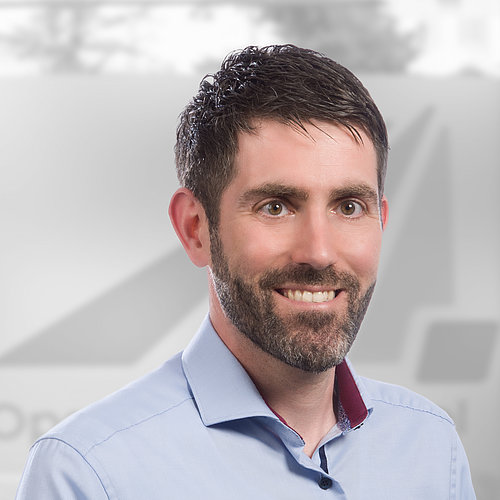About the safety of UV disinfection of surfaces, air and human skin
It has been proven that viruses and microorganisms can be killed efficiently and reliably with UVB and UVC radiation.
The use of UV lamps and UV LEDs in the fields of
- Sterilization in closed chambers
- Disinfection of surfaces with automated solution
- UV surface disinfection in absence of persons
- mobile UVC lamps / UV-LED hand lamps
- Air cleaning with UV disinfection
While the maximum duration and dose of exposure is regulated in the workplace, these are currently not clearly defined exposure limits for private users and in public institutions. The several directives specify requirements in the EU. The Directive 2001/95/EC on general product safety ensures that products available in the EU market are safe.
A product is considered safe if it complies with certain national regulations or EU standards. If no such regulations or standards exist, the safety assessment is based on:
- Commission guidelines;
- best practices in the affected field;
- current state of knowledge and technology;
- Safety levels that consumers can expect.
The use of closed chambers and automated solutions, e.g. for the disinfection of corona viruses, is comparatively safe and simple. For example, irradiation chambers usually offer complete protection by their closed design. Automated solutions for the disinfection of surfaces should be carried out in the absence of persons, since surface disinfection is generally not safe and exceeds the workplace limits. Here the question of access or control of human presence is often in the foreground. Exposure must be checked and determined for the case of failure, for installation and maintenance.
The use of mobile UVC lamps and UV LED systems for the disinfection of everyday objects, such as cell phones, is generally a problem. Here, due to the free propagation of the radiation, a safe application can be achieved only by safety instructions, training, correct use and, if necessary, safety equipment. Manufacturers and distributors must know the emission of the products and provide information on emission, classification, risk group, warning symbols and hazards.
With regard to UV air purification, also known as UV air disinfection, the following must be determined. The safety requirements for air cleaning devices are given in DIN EN 60335-2-65:2013-02; VDE 0700-65:2013-02 "Safety of electrical appliances for household and similar purposes - Part 2-65: Particular requirements for air cleaning devices". This does not yet include any requirements for UV emission. This raises the question which residual emission is permissible.
For the workplace this could be estimated on the basis of daily exposure. For example, the ACGIH exposure limit value for 253.7 nm is 6 mJ/cm² for a period of 8 h. This corresponds to an 8-hour continuous exposure at 2 mW/m² (0.2 μW/cm²).
For public institutions, private users, untrained persons or even children, neither exposure duration nor exposure limit values are specified. Therefore a simple estimation is not possible.
Special requirements for air cleaning devices with UVC emitters are already known from the draft standard DIN EN 60335-2-65/A2:2014-04; VDE 0700-65/A2:2014-04. According to our understanding this corresponds to the current state of knowledge and technology. For example, a residual emission of less than 3 mW/m² = 0.3 µW/cm² must be observed. Simplified, no UV must be emitted. A calibrated radiometer with a resolution and detection limit, at least by a factor of 10 better, is sufficient for the assessment.
We are pleased to be available as an independent partner for measurement, consulting, calibration and testing. Please ask us.
Finally, a note on the so-called Far UV disinfection with 222 nm:
UV irradiation of skin for disinfection is generally not recommended. The Federal Office for Radiation Protection in Germany (BfS) advises against exposing of human skin to intensive UV radiation to get rid of the corona virus. Caution is required when using UVC radiation. There is a risk of damage to the eyes and skin. The BfS also advises caution with devices that work with "Far-UV-C" sources. Of course, the requirements of occupational safety must be observed for these "Far-UV-C" wavelengths as well.
The following literature is intended to help in dealing with the issues surrounding UV disinfection:
CIE 155 "Air disinfection by ultraviolet radiation", 2003
CIE Position Statement on the Use of Ultraviolet (UV) Radiation to Manage the Risk of COVID-19 Transmission, May 2020
EN 62471:2008 Photobiological safety of lamps and lamp systems
EN 14255-1:2005 Measurement and assessment of personal exposures to incoherent optical radiation - Part 1: Ultraviolet radiation emitted by artificial sources in the workplace
EN 14255-4:2006 - Measurement and assessment of personal exposures to incoherent optical radiation - Part 4: Terminology and quantities used in UV-, visible and IR-exposure measurements
ISO 15858:2016 UV-C Devices — Safety information — Permissible human exposure
ISO 15714:2019 Method of evaluating the UV dose to airborne microorganisms transiting in-duct ultraviolet germicidal irradiation devices
DIN EN 60335-2-65/A2:2014-04; VDE 0700-65/A2:2014-04 Household and similar electrical appliances - Safety - Part 2-65: Particular requirements for air cleaning appliances
EN 60598-1:2015/A1: Luminaires - Part 1: General requirements and tests (EN 60598 series may be used as the basis for risk assessment considering mechanical, electrical and thermal safety)
Directive 2006/25/EC (Artificial optical radiation)
Directive 2001/95/EC on general product safety
Product Safety Act (ProSG)
ICNIRP Guidelines on Limits of Exposure to Ultraviolet Radiation of Wavelength between 180 nm and 400 nm (Incoherent Optical Radiation) published in Health Physics 87(2): 171-186, 2004
GLA "Position Statement on Germicidal UV-C Irradiation UV-C SAFETY GUIDELINES" Stand 05-2020
GLA "Germicidal UV-C Irradiation -SOURCES, PRODUCTS AND APPLICATIONS" booth 09-2020
Stand 12-2020
Note:
These lists of limit values, protective measures and requirements are not complete. The laws, guidelines and standards apply, in the respectively valid version with the respectively valid parts. It is our opinion. All information without guarantee and claim to completeness


